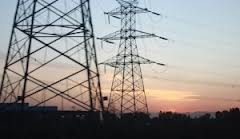
China disseminates energy policy
China's Energy Policy 2012.
This is the title of the white paper released by the Information Office of the State Council, or China's cabinet.
The white paper elaborates on the energy policy of the world's largest energy producer's policies on energy development, conservation and the promotion of renewable power sources.
China has built up a comprehensive energy supply system comprising coal, electricity, petroleum, natural gas, and new and renewable resources, according to the document.
China's energy development must follow a path of high technology content, low consumption of resources, light environmental pollution, sound economic returns, as well as energy security, the paper said.
By the end of 2015, China will lower its energy consumption per unit of GDP by 16 percent from 2010 and lower its carbon dioxide emission per unit of GDP by 17 percent, according to the country's 12th Five-Year Plan (2011-2015).
China will actively develop hydropower, solar power and wind power generation, seek safe and efficient ways of developing nuclear power, as well as utilize biomass energy and other types of renewable energy, according to the white paper.
China plans to increase the share of non-fossil fuels in primary energy consumption to 11.4 percent and increase that of installed generating capacity from non-fossil fuels to 30 percent by the end of 2015, the paper added.
In 2011, China's installed generating capacity of hydropower reached 230 million kw, ranking it first in the world. Fifteen nuclear power generating units were put into operation, with a total installed capacity of 12.54 million kw. Another 26 units, still under construction, were designed with a total installed capacity of 29.24 million kw, another world-leading figure.
Meanwhile, China again topped the world in wind power, with an installed generating capacity connected with power grids of 47 million kw.
For more.























 Advertise
Advertise






